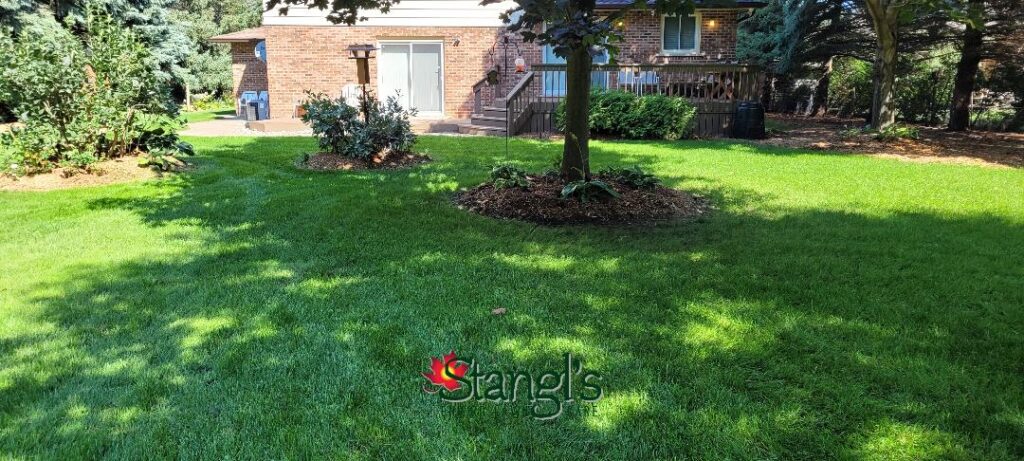When it comes to lawn care, many consumers and conventional lawn care companies share a belief system that, quite frankly, is riddled with fallacies. This outdated mindset is built on quick fixes, surface-level solutions, and a lack of understanding about what truly makes a lawn healthy. Instead of nurturing long-term soil health and creating resilient ecosystems, they chase instant gratification through chemical solutions, overlooking the environmental and health impacts that follow.
The Fallacy of Quick Fixes
Many consumers believe that a lush, green lawn can only be achieved by dumping fertilizers and herbicides on the grass. They see a few weeds and assume something is wrong, rather than considering that those weeds are simply indicators of underlying soil conditions. They want the “perfect” lawn, but they’re not willing to invest the time and effort required to create a truly healthy one.
The conventional lawn care industry has capitalized on this misconception, offering a variety of chemicals that provide temporary results at the expense of long-term health. These companies push high-salt fertilizers and pesticides, applying them indiscriminately in pursuit of short-term aesthetics. This approach is ultimately unsustainable, creating lawns that depend on chemicals to stay “healthy” and leaving soils degraded, compacted, and devoid of life.
The Hidden Cost of “Green”
Consumers often fail to see the hidden cost of that chemically induced “green.” Sure, the lawn may look healthy on the surface, but beneath it lies soil that’s been stripped of essential biology, compacted by heavy equipment, and chemically burned by synthetic fertilizers. These chemical products don’t stay within the borders of the application area; they leach into nearby soil, run off into waterways, and impact wildlife. Worse still, they expose applicators, families, pets, and neighbors to harmful toxins, which over time can lead to illnesses, including cancer.
It’s a cycle that resembles a dog chasing its tail—the more chemicals are applied, the more dependent the lawn becomes on them. Insects and diseases become more common in chemically treated lawns, prompting the application of even more pesticides and fungicides. Rather than solving the problem, these treatments create new ones.
The Science Behind Soil Health—And Why It Matters
At Stangl’s Enviro Lawn Care, we have a different philosophy, one rooted in science, sustainability, and decades of experience. We understand that a healthy lawn starts with healthy soil. We use advanced tools like microscopes, infiltration rings, and penetrometers to measure and improve the biological and physical health of the soil, not just its chemical balance.
Our regenerative approach aims to build soil structure, increase organic matter, and promote microbial life. These elements create a resilient lawn that can withstand drought, naturally resist pests, and retain nutrients—without the need for synthetic fertilizers and pesticides.
Breaking Down Misconceptions
The conventional lawn care industry has effectively greenwashed consumers into thinking that their products and methods are the best or even the only way to maintain a healthy lawn. However, what they’re really offering is a temporary illusion of health. True lawn care goes beyond appearances. It’s about creating a system where soil, plants, and microorganisms work together to build resilience from the ground up.
Our clients benefit from our 44 years of experience and commitment to continuous learning. We’re not just spraying chemicals and hoping for the best; we’re using advanced techniques, like microscopic analysis and Nature’s Brew applications, to ensure your soil’s health. Nature’s Brew, which includes calcium, fish hydrolysate, kelp, and other organic ingredients, is designed to feed the soil, not just the plants, building life from the ground up.
Challenging the Status Quo
The lawn care industry and consumers alike need to rethink what it means to have a healthy lawn. By sticking to quick fixes and ignoring long-term solutions, they’re missing out on the benefits of regenerative, sustainable practices. Weeds, for instance, aren’t necessarily a sign of failure. They’re indicators of what’s happening in the soil. Addressing soil health holistically is what reduces weed pressure over time, rather than attacking them with herbicides that only mask the underlying issues.
It’s time to question this belief system and recognize that lawn care isn’t a one-size-fits-all industry. Every lawn has its own unique set of challenges and conditions. Instead of fighting against nature with harmful chemicals, why not work with it?
An Invitation to Rethink Lawn Care
If you’re ready to break free from the fallacies perpetuated by conventional lawn care and the “instant gratification” mindset, we invite you to consider a new approach—one that respects the natural processes at work and aims to create a lawn that is not only beautiful but also sustainable. Whether you’re a current client or someone new to our philosophy, we welcome your questions, your curiosity, and your commitment to building a lawn that benefits both you and the environment.
At Stangl’s Enviro Lawn Care, we’re not just offering a service; we’re challenging an outdated belief system and fostering a healthier future for your lawn, your family, and the planet.
